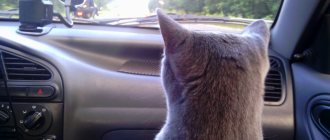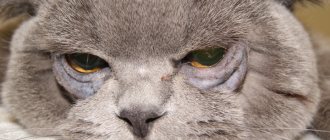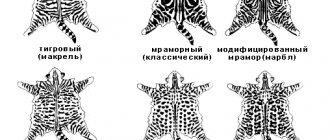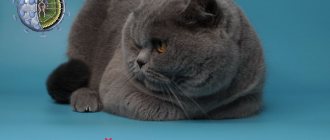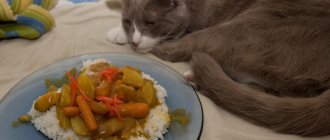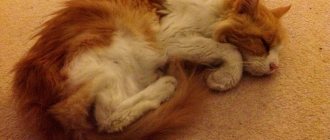What is heart disease?
The heart is the most important organ in a cat's body. It pumps blood containing oxygen and nutrients through blood vessels to the body's cells. Most heart diseases are associated with decreased efficiency of blood pumping. This can cause fluid to accumulate in the chest and abdomen. There are two main types of heart disease: one affects the heart valve and the other affects the heart muscle. In both cases, these conditions can be controlled by ensuring proper nutrition and exercise regimen. If necessary, the use of veterinary drugs may also be required. The right food and advice from a veterinarian can help your sick cat live an active life and enjoy every moment of it, despite her illness.
Two main types of heart disease
Chronic valve disease: A heart valve that leaks blood through reduces the amount of blood that can enter the body.
Heart muscle disease: Weakened or thickened heart muscle reduces the efficiency of pumping blood.
General trend in the treatment of heart diseases
If you notice characteristic signs of myocardial dysfunction in your pet, it is recommended to contact a veterinary clinic as soon as possible. It is imperative to diagnose the animal's condition. The following studies are prescribed:
- a general history taking, based on visible signs from the moment they appear;
- assessment of the general condition of the cat - with congestion in the myocardium, the appearance of the animal changes;
- physical examinations - auscultation and percussion are performed to obtain information about the development of heart pathologies. These studies allow you to hear noises and determine the boundaries of the organ.
In addition to the above diagnostic measures, laboratory and instrumental studies are prescribed. A blood test can identify chronic types of myocardial lesions visible during biochemical testing.
Instrumental examination, such as radiography, is necessary to visualize changes in the shape and size of the organ. A necessary diagnostic method is echocardiography, which allows one to detect the movement of blood through the chambers to assess the functional state of the walls and valve apparatus. For diagnostic purposes, specific techniques are also used, such as myocardial catheterization. For manipulation, a flexible tube is inserted into the heart cavity. This technique allows you to assess both the functional and anatomical state of the walls of the heart muscle.
Based on the data received from diagnostic measures, the veterinary specialist develops an individual treatment plan. The basis of treatment is medications and regular preventive examinations with a doctor. Not least important is diet correction.
The basic goal of treatment is to significantly slow down destructive processes developing in the myocardium. It is also necessary to prevent the development of edema in the area of the pulmonary structures and normalize the heart rate along with blood circulation.
Depending on the type of cardiac pathology, additional medications are prescribed. Their main goal is to increase oxygen enrichment of the blood and prevent the development of blood clots. If helminths become a factor provoking the development of heart pathologies, specific diagnostics and further deworming measures are prescribed.
The following types of medications are prescribed for cats with diagnosed myocardial diseases:
- drugs with antihypertensive effect;
- medicines that eliminate swelling (diuretics);
- anti-inflammatory drugs and anticoagulants;
- cardiac glycosides and drugs to strengthen general immunity - vitamin-mineral complexes and immunomodulators.
Not all heart pathologies can be eliminated or corrected with medications. In some cases, surgical intervention is required to correct anatomical defects, reduce the load on the heart muscle and optimize blood ejection processes.
What are the causes of heart disease?
It is impossible to pinpoint a single cause, but it is worth noting that poor nutrition is highly likely to lead to the development of cardiovascular disease. Other risk factors include:
- Physical Condition: Overweight cats are more likely to develop heart disease.
- Age: The older cats are, the more likely they are to develop heart disease.
- Breed: Persian cats, Maine Coon cats and American Shorthair cats are more likely than others to suffer from heart muscle diseases.
Symptoms of Cardiovascular Diseases
In general, the symptoms of heart disease are very ambiguous. They depend on many factors: the age of the pet, the conditions under which it is kept, its physical condition, the presence of other diseases and other individual characteristics. Characteristic signs of cardiac pathologies:
- the cat becomes lazy, simple actions are more difficult for him than usual; - cough, hoarse sighs and wheezing difficulty appear; - slow reaction to stimuli; - impaired coordination of movements; - fainting, convulsions; - shortness of breath after performing simple actions; - decrease in temperature of the extremities and certain parts of the body (ears, paws); - pallor of mucous membranes, such as gums, eyes (indicates reduced blood circulation); - unreasonable refusal of food and treats; - decrease in body temperature.
As we can see, most of the symptoms are associated with the pet’s mobility, which means they can be detected while playing with it. “Murkosha” warns that the above symptoms may be signs not only of heart problems, but also of other diseases. In any case, if the cat’s health worsens, you must contact a veterinarian to determine the disease.
Read more about cat diseases: Main cat diseases and their symptoms
Does your cat have heart disease?
It is quite difficult to answer this question, since the symptoms may be similar to those observed in other diseases. Your veterinarian can evaluate your cat for cardiovascular disease using the following methods:
- Listen with a stethoscope to look for murmurs or fluid accumulation in the lungs.
- By palpation, you can detect unusual pulse rhythms.
- X-rays can be used to see if the heart is enlarged.
- The ECG will show an enlarged heart and an abnormal rhythm.
- Blood and urine tests will show the presence of heartworms and the condition of other internal organs.
Symptoms that may indicate the presence of cardiovascular disease in a cat:
- A dull cough that sometimes causes a gag reflex.
- Difficulty breathing, including shortness of breath.
- Decreased physical activity.
- Noticeable weight gain or loss.
- Abdominal bloating.
IMPORTANT. The presence of heart disease is difficult to determine in the early stages, so it is important to visit your veterinarian regularly and ask him questions that concern you.
Heart disease in cats symptoms
There are many diseases that affect the heart muscle. The symptoms are quite extensive, therefore there are several main factors by which classification occurs in the future:
- Origin of the disease. There are congenital and acquired pathologies, which affects the speed of manifestation of the first symptoms.
- Impact of external factors. Common causes of heart disease are infections, injuries, and degenerative processes.
- Duration. Heart diseases in cats are divided into acute, subacute, and chronic.
- Clinical status according to which treatment is prescribed. This includes left and right ventricular failure, dysfunction of both ventricles, atrial pathologies, valve diseases, and so on.
- Visualized defects. The causes of heart disease in cats can be defects in the septa between its different parts, valvular insufficiency, the complete absence of functionally important structures or their disposition (defects).
Owners most often notice breathing problems in sick cats. Shortness of breath is perceived as a sign of acute pathology, but in fact it develops over months, sometimes years. Its appearance indicates severe damage to the heart, when failure reaches its peak and internal organs (primarily the brain) receive an insufficient amount of oxygen. Some cases of shortness of breath develop due to increased pressure in the pulmonary vessels, which also indicates the severity of the pathology.
Changes in the animal's body weight are possible. Fluctuations reach 500g within a week. Weight disorders include both rapid weight gain and sudden weight loss.
Coughing is a nonspecific sign of cardiac disease, practically indistinguishable from an animal’s attempts to regurgitate something. A dry, frequently recurring cough, which is not associated with meals, and often occurs after physical exertion or exposure to stress factors, is of diagnostic importance.
Paralysis, weakness of the limbs (usually pelvic). A complex symptom complex, the root cause of which is the formation of blood clots in the chambers of the heart. They are able to enter the bloodstream and obstruct the arteries that supply blood to different parts of the body. The arteries of the pelvic limbs are often clogged, but damage to the kidneys, brain, front legs and other parts of the body is also possible.
Signs of heart disease in cats in the initial stages are usually nonspecific, which complicates diagnostic measures.
Arterial thromboembolism in cats
Thromboembolism (formation of blood clots) and heart failure in cats are common diseases of the heart and blood vessels.
Thromboembolism occurs when blood clots form in one of the chambers of the heart and then break off and travel through the bloodstream. Eventually, these blood clots enter the blood vessel and can block its lumen.
Although a clot can occlude any vessel, the most common site for feline arterial thromboembolism is the terminal segment of the abdominal aorta, which supplies the hind legs.
This problem is called abdominal aortic thromboembolism. A blood clot in this area cuts off the blood supply to the hind legs. When this happens, the cat can no longer use its back legs properly and will drag its feet. This disease of the cardiovascular system is malignant and is characterized by high mortality.
Diagnosis of cardiac pathologies
Even knowing all the characteristic signs, it is impossible to cope with heart disease on your own. Additionally, symptoms may not appear for a long time. Therefore, it is important to regularly visit the veterinarian for a preventive examination, at least once a year.
Read more about the need for an annual visit to the veterinarian: Annual visit to the veterinarian - what is included and why it is needed
Doctors make a diagnosis based on the following examinations:
— ECHO (allows you to visually assess the size of the heart muscle and the condition of its individual elements); - ECG (with it you can detect heart rhythm disturbances); — MRI; - radiography; - lab tests.
Myocardial infarction and coronary syndrome in cats
Myocardial infarctions similar to those in human patients do not occur in cats. Microscopic myocardial infarctions are common in cats. This problem occurs in any form of cardiovascular disease. Such processes are the cause of the formation of “burn-out” cardiomyopathy in cats. This heart disease can be considered as a transformation of the HCM phenotype into DCM.
Identifying and analyzing signs of heart disease in cats is a complex process. Correct diagnosis of the cause of heart disease is necessary to determine the correct course of treatment, as well as determine the prognosis and management of a sick cat.
In the veterinary city of Serpukhov, the appointment is conducted by cardiologist Andrey Anatolyevich Rudenko. Our clinic has a full range of diagnostic equipment to determine the nosological form of heart disease in your domestic cat.


